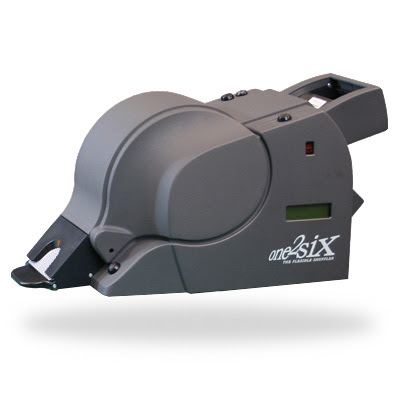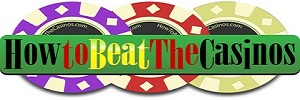Card shuffler – friend or enemy?
If you’ve read this blog for a while, you’ll know that I’ve been banned from ALL UK land-based casinos, for what I believe is “suspected card counting” (although the casinos in question have never confirmed the reason in writing).
Ok, so I’ve played blackjack for a good 15 years or so. And yes, I’ve had some exceptionally lucky runs of cards. And yes, I’ve made good money along the way (and also faced those inevitable losing sessions too from time to time). But am I a card counter? And what if I was? Is it against the law to win a game using your mind?
In their efforts to stop card counters from playing and potentially winning at blackjack, many casinos have introduced continuous shuffle machines at their blackjack tables. Our local casino has the ShuffleMaster continuous shuffle machines on ALL blackjack tables in the main pit (only the VIP room has original blackjack shoes – and even then, they are a 6-deck game so hardly beatable).
Here’s a photo of the ShuffleMaster one2six unit, from the ShuffleMaster.com website.

In my blackjack playing life, I’ve played normal shoes, hand dealt single and double deck blackjack games, and these continuous shuffle machines. Are the continuous shuffle machines a friend or an enemy? That depends on your perspective. I believe that most casinos consider them friends and income generators: why else would a casino spend between $10,000 US and $20,000 US on EACH continuous shuffle machine?
From a general player perspective, these machines are an enemy. They don’t change the odds of getting certain hands, they don’t make a bad game worse (per se), they don’t alter the basic strategy that you should play against them. But what they do which is bad for players is INCREASE the number of hands played in an hour – there’s no longer a break in gameplay to allow the dealers to shuffle. So what does this mean? In real terms, you can play an extra 20% – 25% hands per hour – so that’s an extra 20% – 25% an hour you’ll lose over playing a hand shuffled shoe. If you were playing $10 a hand and playing 60 hands an hour on a hand shuffled shoe, at 1.5% average house edge, you’d be losing 60 x $10 x 1.5% = $9 per hour. If you’re now playing say 75 hands per hour, you’d be losing 75 x $10 x 1.5% = $11.25 per hour.
From a card counting perspective, they are a definite player enemy. You simply can’t count cards on these machines with any certainty. At the end of every hand played, the dealer puts the cards back into the shuffler, where they are instantly shuffled back into the cards in play. This completely changes the game dynamic from a typical shoe game. Shuffle tracking players are also unable to get an edge in this game – you can no longer shuffle track cards (which used to be easier with some dealers rather than others). You can’t see the cards (they’re enclosed in the machine), and the machine is CONSTANTLY shuffling.
Our local casino used to deal 6-deck blackjack, but it now uses the continuous shuffle machines instead – but they only have 4 decks of cards inside. That reduction in the number of decks used, all other things aside, is beneficial for the player. The lower the number of decks used, the lower the house edge for the casino. “Advantage players” are still very likely to avoid this game however, because they simply can’t count the cards with any certainty.
Knowing that the shufflers are putting some “advantage players” off the game, the casino has also increased its comp frequency lately. It’s much easier now to get free drinks than it ever was. In fact I barely wait 5-10 minutes without a drink, whereas a wait of an hour or more was commonplace before.
What I most like is that the tables aren’t as busy as before – so I can open and close multiple boxes on the table without heat from other players. Even though you can’t count in the normal way on these machines, you can still run a very small count exercise by looking at the last 15-20 cards dealt and calculating a true count / running count on that result set. It’s not entirely accurate (it’s a very small sample), but if you know for example that those last few hands were mainly very small cards, it makes sense that larger cards are coming. The ability to open and close boxes when required allows you more opportunity to catch those high cards. The casino gives me no heat when doing this either – whereas an increase in bet size does occasionally raise their eyebrows. I’ve had good results / luck doing this lately.
So, friend or foe? For most players, continuous shuffle machines should be avoided where possible (I think). However, I’ve found them no better or worse than hand shuffled games over the long term. Each to their own to decide!


When the local casino here in the States got approved for Vegas Gaming – I spent the first 3 months playing on these 6-Decks CSM tables. The first few times, it was interesting to see my small $500 bankroll get wiped out so quickly.
Although I have to admit, in one night, I managed to walk away with $2000 after doing a $200 buy-in. Of course, that was over a period of 4 hours of continuous play. Personally, I thought it was just pure luck and proper basic strategy that got me that win. Of course, it didn’t take much more return visits to the casino before I began losing it all back to them and then some at the same tables.
If I choose to sit at a CSM table, I usually tend to find a table with a group of people who seem to know basic strategy very well.
Otherwise, I’d rather stick it out and wait for an open spot on the 8-deck shoe dealt tables.
I have played BJ for 20 years. The indian casinos are the worst! Iam convinced that they are pulling some of the 10 count cards from the decks in the machines. I know it sounds crazy but who checks these machines.The state ( Okla.) makes to much money from the casinos to shut them down.